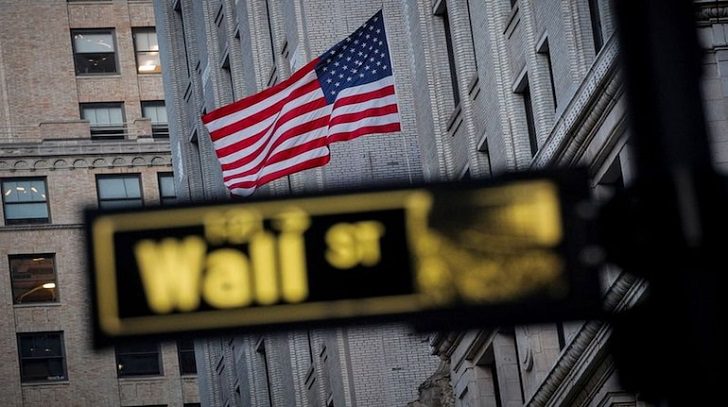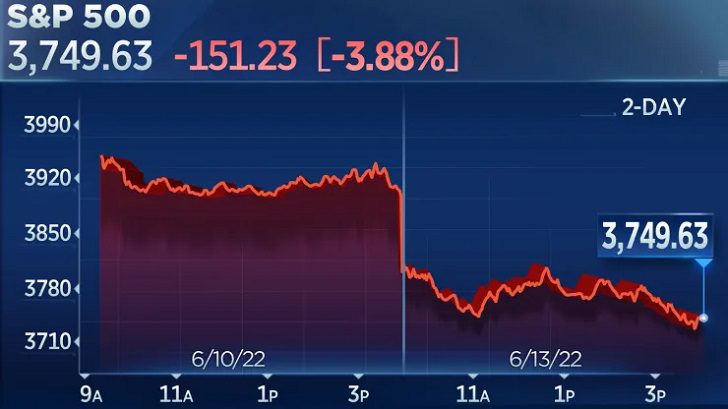Fears of a possible recession have pounded stock markets around the world amid reports that the U.S. Federal Reserve could raise interest rates by as much as 0.75% this week, its biggest single hike in borrowing costs for nearly 30 years.
The slide in the S&P 500 topped 3%, while the Treasury curve steepened, with the gap between five- and 30-year rates hitting the widest since March. Investors are increasingly worried about the limits to Fed policy at a time when supply-chain disruptions pose a significant threat to inflation amid a ravaging war in Ukraine and China’s Covid lockdowns. Data Monday showed U.S. consumer’s project prices in three years to be higher compared with a month ago, a troubling sign for officials trying to keep longer-term expectations anchored.
The impact on large-scale stocks

As Wall Street’s benchmark S&P 500 index fell almost 4% on Monday into bear territory, prompting selloffs from Sydney to Shanghai, U.S. central bank policymakers will begin a two-day meeting on Tuesday with expectations mounting that they will lift rates by at least 0.50%. Friday’s U.S. inflation report has exacerbated this dynamic, undermining hopes that pricing pressures have peaked, or are peaking, and raising the possibility for even more aggressive rate hikes from Washington.
But the Wall Street Journal reported recently that persistent inflation in the U.S. had touched 8.6% in May, according to figures released on Friday, and could lead the Fed to raise its short-term interest rate by three-quarters of a percentage point. That’s triple the usual amount and something the Fed hasn’t done since 1994. Traders now see a 34% probability of such a hike, up from just 3% a week ago.

The Dow Jones Industrial Average futures, YM00, 0.40% fell about 300 points, or 1%, as of midnight Eastern Time, while S&P 500 futures, ES00, fell 0.49%, and Nasdaq-100 futures, NQ00, fell by 0.66%, posting even steeper declines. Prices of bitcoin and other cryptocurrencies also slid over the weekend, with bitcoin, BTCUSD, crashing by 7.25%, falling below the $26,000 level to its lowest point in 18 months, and more than 60% off its all-time high reached in November 2021. Crude prices, CL.1, dipped by 1.40% as well.
What’s next?

The market is now thinking much more about the Fed driving rates sharply higher to get on top of inflation and then having to cut back as growth drops. That will leave traders and investors “deliberating how much further tightening central banks’ will be able to deliver and, therefore, how much higher yields can go from here. And we all know nothing ever good happens when interest rate volatility spikes in capital markets.
